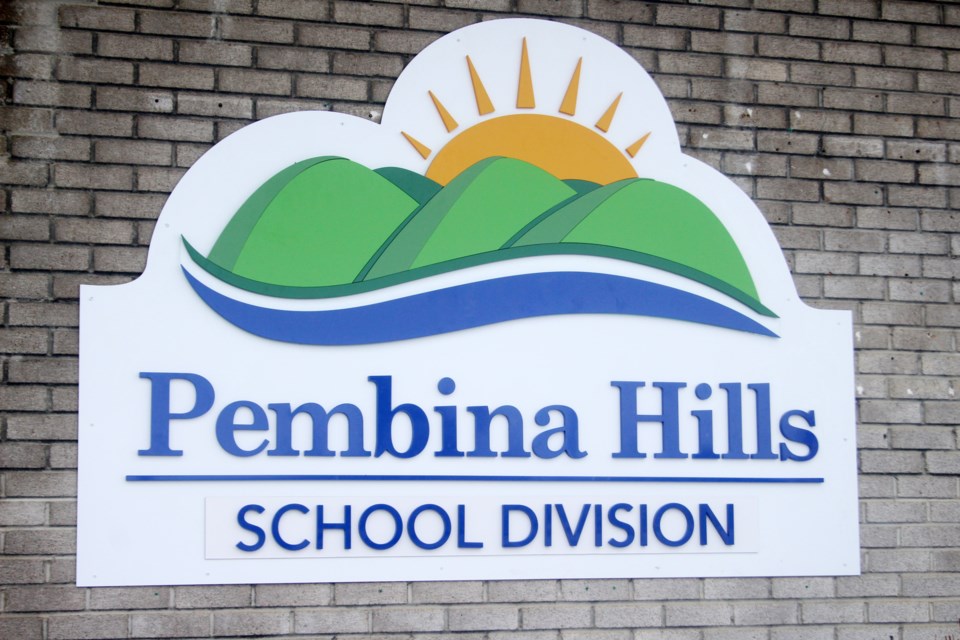BARRHEAD/WESTLOCK — Pembina Hills Public Schools would need to spend about $76 million over the next 20 years to complete all the repairs and facility upgrades identified by the province, though the modernization of Barrhead Composite High School (BCHS) will reduce that amount by nearly a third.
The division’s outstanding capital backlog was one of the revelations shared in the annual facilities assurance report presented to Pembina Hills trustees at their June 21 meeting by director of facilities Tracy Tyreman.
It should be noted that Tyreman’s figure of $76,718,835 for the division's infrastructure deficit was pulled from Alberta Infrastructure’s VFA database, which tracks capital needs across the province.
On the plus side, the modernization of BCHS — which was approved by the province to move into the planning stages back in March — would reduce the division’s infrastructure deficit by about $20.272 million.
Board chair Judy Lefebvre asked why that amount was smaller than the total cost of the modernization, which was estimated at around $29 million.
Supt. Michael Borgfjord clarified that the $20.272 million represents just the maintenance needs of the school, and the modernization would involve additional upgrades beyond what is needed for maintenance.
Tyreman said the "kickoff meeting” for the planning of the BCHS modernization took place on June 20, and the entire process would be four years from start to finish.
“It’s going to be a big project,” he said, adding that his staff and the teachers at BCHS are pretty excited.
Facilities report
Tyreman’s report also detailed the make-up of the department’s staff, which includes a number of tradespeople with experience as electricians, plumbers, carpenters, painters and so on.
Each year, his department updates an ongoing three-year capital plan that is submitted annually to the province, along with plans to utilize the Capital Maintenance and Renewal (CMR) and Infrastructure and Maintenance Renewal (IMR) grants.
Both sources of funding are very similar, though IMR projects do not require advance approval by the Alberta government while CMR projects do.
This year, the division received $539,697 as part of its IMR grant and $372,835 for its CMR grant, which adds up to less than a million dollars for new capital projects.
“We definitely have to stretch those dollars,” he said.
Tyreman said this year’s IMR funds were used this year for interior and exterior renovations to Busby School, as well as the installation of acoustical panels in the gymnasium. The CMR grant was also put towards exterior renovations of Busby.
However, the division also drew upon $5.561 million in reserve funds to conduct a variety of projects.
These included some major initiatives that trustees had approved back in September — the clean-up of contaminated soil at the old Vimy School site and the Barrhead bus yard, as well as an exterior renovation at the support services building to correct some mold damage.
As well, the list of projects paid for with money from reserves included the replacement of a boiler and public announcement (PA) system at BCHS, a PA system replacement at Busby School, a PA system at Dunstable School and Eleanor Hall School, asphalt repairs and a PA system replacement at Westlock Elementary School.
There are also a number of projects slated to be carried out this summer, including the installation of strobe lighting at all sites; roof repairs at BCHS, the installation of an air handling system at Barrhead Elementary School (BES); the re-finishing of the gym floors at Eleanor Hall, R.F. Staples and Fort Assiniboine School; a new playground protective surface at Neerlandia Public Christian School (NPCS) and renovations to the Westlock and Barrhead Outreach buildings.
A new handicap-accessible door will also be installed at the Pembina Hills regional office and there will be a number of upgrades carried out at Westlock Elementary, such as office renovations, the re-doing of asphalt on the bus lane, a new protective surface where the playground swings are located and bathroom renovations.
Tyreman noted the bathroom renos had already started, as there would be not enough time to complete them if they had to work through July and August.
“The school was kind enough to let us start early,” he said.
Incidentally, Tyreman noted he is slated to receive $542,720 as part of the 2023-2024 IMR grant and $277,150 through the CMR grant.
Other duties
Tyreman’s report concluded by detailing some of the other duties his department is responsible for, such as maintenance of electrical and plumbing/heating systems, painting, caretaking, groundskeeping and general repairs.
Each time a school requests a repair, it generates a “ticket” that the department keeps track of. A total of 1,732 such tickets were generated throughout the year, Tyreman indicated, with the lion’s share falling within the category of general maintenance.
Generally speaking, the largest schools tend to generate the most tickets, with R.F. Staples in Westlock submitting a total of 308 requests.
Tyreman said the facilities department is also responsible for ensuring Occupational Health and Safety (OHS) standards are adhered to, tracks staff training on subjects like first aid and WHMIS and conducts workplace inspections at all of their sites.
At the end of his presentation, Lefebvre thanked Tyreman and his department for their commitment to ensuring their schools are compliant with all regulations.
“You’ve been able to allocate resources where needed according to the guidelines that come down from up above,” she said.



